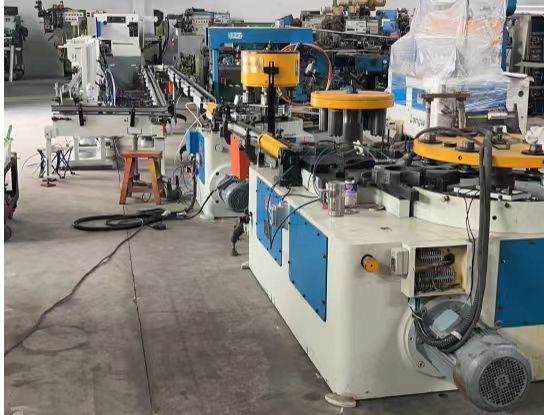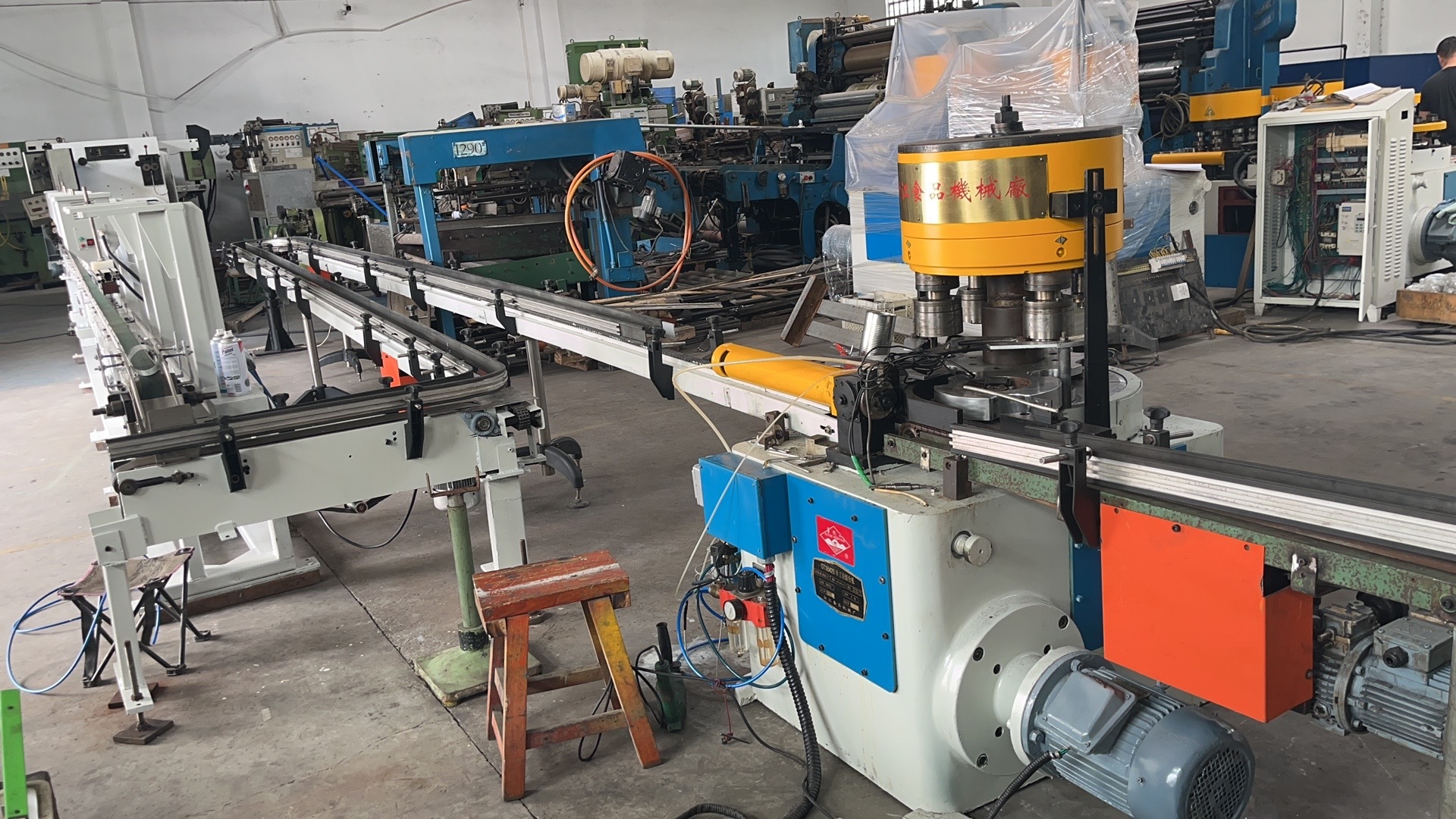Used can making machine
Release time:
2025-03-31 10:19
Source:
Used food can production line

Here is an introduction to the food can iron can production line:
Raw Material Preparation
- Sheet Metal Selection: High - quality tin - plated steel sheets are chosen as the raw material. The thickness and width of the sheets vary according to the requirements of different can sizes.
- Coil Unwinding: The steel coils are placed on the unwinding equipment, which slowly releases the sheet metal and transports it to the next process.
Can Body Forming
- Cutting: The sheet metal is cut into the required size and shape by a cutting machine. Precision cutting ensures that the blanks have the correct dimensions for subsequent processing.
- Forming: The cut blanks are formed into cylindrical can bodies through a series of mechanical presses and molds. The forming process includes operations such as drawing and ironing to achieve the desired shape and wall thickness.
Can End Manufacturing
- End Blank Cutting: Similar to the can body, tin - plated steel sheets are cut into circular blanks for the can ends.
- Forming and Seaming: The blanks are formed into the appropriate shape for the can ends and then seamed onto the can body. The seaming process ensures a tight and leak - proof seal.
Surface Treatment
- Cleaning: The cans are cleaned to remove any dirt, oil, or other contaminants from the surface. This is usually done using chemical solvents or water - based cleaning agents.
- Coating: A protective coating is applied to the inner and outer surfaces of the cans. The coating helps prevent corrosion, protects the food from metal contamination, and provides a smooth surface for printing.
Printing and Decoration
- Labeling and Printing: The cans are printed with labels, brand logos, product information, and other decorative elements. This can be done using various printing techniques such as offset printing, flexographic printing, or digital printing.
Quality Inspection
- Visual Inspection: Trained operators visually inspect the cans for any defects such as scratches, dents, or coating imperfections.
- Leak Testing: The cans are subjected to leak tests to ensure their hermetic seal. This is usually done by pressurizing the cans and checking for any air or liquid leakage.
Packaging and Palletizing
- Packaging: The finished cans are packed into cartons or other packaging materials for shipment. The packaging is designed to protect the cans during transportation and storage.
- Palletizing: The packed cartons are stacked onto pallets and secured for easy handling and distribution.
This is a general overview of the food can iron can production line. The specific processes and equipment may vary depending on the production scale, can type, and quality requirements.
Raw Material Preparation
- Sheet Metal Selection: High - quality tin - plated steel sheets are chosen as the raw material. The thickness and width of the sheets vary according to the requirements of different can sizes.
- Coil Unwinding: The steel coils are placed on the unwinding equipment, which slowly releases the sheet metal and transports it to the next process.
Can Body Forming
- Cutting: The sheet metal is cut into the required size and shape by a cutting machine. Precision cutting ensures that the blanks have the correct dimensions for subsequent processing.
- Forming: The cut blanks are formed into cylindrical can bodies through a series of mechanical presses and molds. The forming process includes operations such as drawing and ironing to achieve the desired shape and wall thickness.
Can End Manufacturing
- End Blank Cutting: Similar to the can body, tin - plated steel sheets are cut into circular blanks for the can ends.
- Forming and Seaming: The blanks are formed into the appropriate shape for the can ends and then seamed onto the can body. The seaming process ensures a tight and leak - proof seal.
Surface Treatment
- Cleaning: The cans are cleaned to remove any dirt, oil, or other contaminants from the surface. This is usually done using chemical solvents or water - based cleaning agents.
- Coating: A protective coating is applied to the inner and outer surfaces of the cans. The coating helps prevent corrosion, protects the food from metal contamination, and provides a smooth surface for printing.
Printing and Decoration
- Labeling and Printing: The cans are printed with labels, brand logos, product information, and other decorative elements. This can be done using various printing techniques such as offset printing, flexographic printing, or digital printing.
Quality Inspection
- Visual Inspection: Trained operators visually inspect the cans for any defects such as scratches, dents, or coating imperfections.
- Leak Testing: The cans are subjected to leak tests to ensure their hermetic seal. This is usually done by pressurizing the cans and checking for any air or liquid leakage.
Packaging and Palletizing
- Packaging: The finished cans are packed into cartons or other packaging materials for shipment. The packaging is designed to protect the cans during transportation and storage.
- Palletizing: The packed cartons are stacked onto pallets and secured for easy handling and distribution.
This is a general overview of the food can iron can production line. The specific processes and equipment may vary depending on the production scale, can type, and quality requirements.
Previous Page
Next Page
Previous Page
Next Page
Related News
Telephone:+86 20 38921453
Mobile:13902234825
whatsapp:+86 13902234825
Address: No.10, Qiaotou Lane, Liangtian Village, Zhongluotan Town, Baiyun District, Guangzhou
FAX: 86 20 38921453
E-mail:ludeh@163.com

WeChat Public Number
©2023 Guangzhou Kunguan Cans Equipment Co., Ltd. All Rights Reserved







